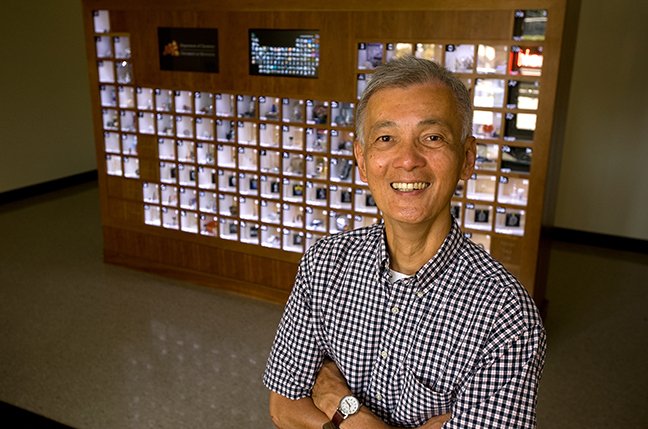'Metalloenzyme Mastery' features Professor Que

A feature article, "Metalloenzyme Mastery," published in the July 29, 2020, edition of Chemistry World highlights the work of Regents Professor Lawrence Que Jr., William Tolman, formerly from the University of Minnesota now at Washington University, and one of Tolman's former post-doctoral researchers Patrick Holland, who is now a chemistry professor at Yale University. All are bioinorganic chemists seeking to develop synthetic mimics of nature's diverse metalloenzyme collection.
Professor Que is looking at methanotrophs found in lakes that can turn methane to methanol. If that can be replicated synthetically, the methane from such places as the Bakken Fields in North Dakota, which is burnt off because transporting it is not economically feasible, could perhaps be turned into methanol.
According to author James Mitchell Crow's article: "Making methanol from methane is a non-trivial transformation, requiring the breaking of the strongest aliphatic carbon–hydrogen bond that there is. In the methanotrophs, non-heme iron-based enzymes called monooxygenase drive the conversion. . . . Rather than try to tame the enzyme itself, Que is attempting to recreate the essence of its active site in a synthetic system and access similar levels of catalytic performance."
Que said, "The last 30 years of my career has focused on how these enzymes work, and how we can develop synthetic catalysts that can do some of these transformations."
The article also emcompasses Tolman's focus on how metalloenzymes activate oxygen, looking at copper and the nature of the highly oxidising copper–oxygen intermediate that is able to catalyse the oxidation of strong carbon–hydrogen bonds. Holland is concentrating on the challenges of recreatin in a synthetic system the nitrogenase enzyme active site.